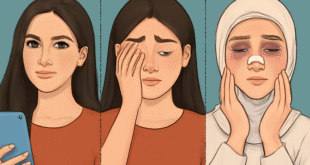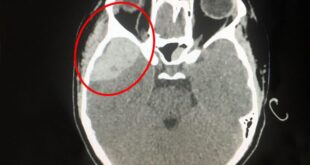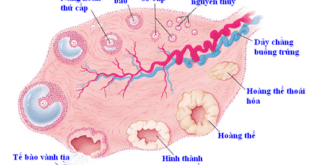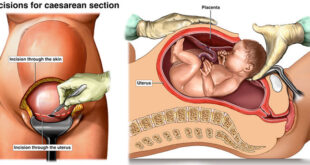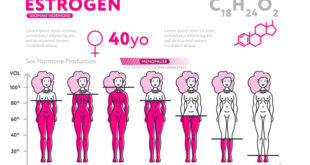KỶ NIỆM 65 NĂM NGÀY THẦY THUỐC VIỆT NAM
Lịch sử Y học Thế Giới
Các lịch sử y học cho thấy cách xã hội đã thay đổi trong cách tiếp cận của họ tới bệnh và bệnh từ thời cổ đại đến nay. Truyền thống y học ban đầu bao gồm những người Babylon , Trung Quốc , Ai Cập và Ấn Độ . Sushruta , từ Ấn Độ , đã giới thiệu các khái niệm về chẩn đoán và tiên lượng y tế . Các Hippocratic Oath được viết bằng Hy Lạp cổ đại trong thế kỷ thứ 5 TCN, và là một nguồn cảm hứng trực tiếp cho lời tuyên thệ của văn phòng bác sĩ thề khi nhập cảnh vào nghề hiện nay. Trong thời trung cổ, các thực hành phẫu thuật được thừa hưởng từ các bậc thầy cổ xưa đã được cải thiện và sau đó được hệ thống hóa trong Thực hành Phẫu thuật của Rogerius . Các trường đại học bắt đầu đào tạo có hệ thống các bác sĩ vào khoảng năm 1220 CE tại Ý.
Phát minh ra kính hiển vi là kết quả của sự hiểu biết được cải thiện, trong thời Phục hưng. Trước thế kỷ 19, chủ nghĩa hài hước (còn được gọi là chủ nghĩa hài hước ) được cho là để giải thích nguyên nhân gây bệnh nhưng nó đã dần được thay thế bằng lý thuyết mầm bệnh, dẫn đến phương pháp điều trị hiệu quả và thậm chí chữa khỏi nhiều bệnh truyền nhiễm. Bác sĩ quân đội tiên tiến các phương pháp điều trị chấn thương và phẫu thuật. Các biện pháp y tế công cộng đã được phát triển đặc biệt là vào thế kỷ 19 khi sự phát triển nhanh chóng của các thành phố đòi hỏi các biện pháp vệ sinh có hệ thống. Các trung tâm nghiên cứu tiên tiến được mở vào đầu thế kỷ 20, thường được kết nối với các bệnh viện lớn. Giữa thế kỷ 20 được đặc trưng bởi các phương pháp điều trị sinh học mới, chẳng hạn như kháng sinh. Những tiến bộ này, cùng với sự phát triển về hóa học, di truyền và X quang đã dẫn đến y học hiện đại . Y học đã được chuyên nghiệp hóa rất nhiều trong thế kỷ 20, và sự nghiệp mới mở ra cho phụ nữ là y tá (từ những năm 1870) và là bác sĩ (đặc biệt là sau năm 1970).
2600 trước Công nguyên Ai Cập Imhotep mô tả chẩn đoán và điều trị 200 bệnh.
500 BC Alcmaeon của Croton phân biệt tĩnh mạch với các động mạch
460 trước Công nguyên của Hippocrates, cha đẻ của ngành y học Hy Lạp bắt đầu nghiên cứu khoa học về y học và kê toa một dạng aspirin
300 BC Diocles đã viết cuốn sách giải phẫu được biết đến đầu tiên
280 BC Herophilus nghiên cứu hệ thống thần kinh
130 sau Công nguyên của Galen. Bác sĩ Hy Lạp cho các đấu sĩ và hoàng đế La Mã
c60AD Pedanius Dioscorides viết De Materia Medica
910 Bác sĩ Ba Tư Rhazes xác định bệnh đậu mùa
1010 Avicenna viết Sách chữa bệnh và Canon y học
1249 Roger Bacon phát minh ra kính
1489 Leonardo da Vinci mổ xẻ xác chết
1543 Vesalius công bố những phát hiện về giải phẫu người ở De Fabrica Corporis Humani
1590 Zacharius Jannssen phát minh ra kính hiển vi
1628 William Harvey xuất bản một nghiên cứu giải phẫu về chuyển động của tim và máu ở động vật, tạo cơ sở cho nghiên cứu trong tương lai về mạch máu, động mạch và tim
1656 Sir Christopher Wren thí nghiệm truyền máu chó
1670 Anton van Leeuwenhoek phát hiện ra các tế bào máu
1683 Anton van Leeuwenhoek quan sát vi khuẩn
1701 Giacomo Pylarini tiêm phòng bệnh đậu mùa đầu tiên
1747 James Lind xuất bản chuyên luận về Scurvy nói rằng trái cây họ cam quýt ngăn ngừa bệnh scurvy
1763 Claudius Aymand thực hiện phẫu thuật cắt ruột thừa thành công đầu tiên
1796 Edward Jenner phát triển quy trình tiêm phòng bệnh đậu mùa, loại vắc-xin đầu tiên cho bất kỳ bệnh nào
1800 Sir Humphry Davy phát hiện ra tính chất gây mê của oxit nitơ
1816 Rene Laennec phát minh ra ống nghe
1818 James Blundell thực hiện truyền máu thành công đầu tiên
1842 Crawford W. Long sử dụng làm thuốc gây mê nói chung
1844 Tiến sĩ Horace Wells sử dụng oxit nitơ làm thuốc mê
1846 William Morton, một nha sĩ, là người đầu tiên công bố quy trình sử dụng các đặc tính gây mê của oxit nitơ
1849 Elizabeth Blackwell là người phụ nữ đầu tiên có bằng y khoa từ trường Cao đẳng Y tế Geneva ở New York
1847 Ignaz Semmelweis khám phá ra cách ngăn chặn sự lây truyền của sốt puerperal
1853 Charles Gabriel Pravaz và Alexander Wood phát triển ống tiêm
1857 Louis Pasteur xác định vi trùng là mệnh đề của bệnh
1867 Joseph Lister phát triển việc sử dụng các phương pháp phẫu thuật sát trùng và xuất bản Nguyên tắc sát trùng của thực hành phẫu thuật
1870 Robert Koch và Louis Pasteur thiết lập lý thuyết mầm bệnh
1879 Vắc-xin đầu tiên được phát triển cho bệnh tả
1881 Vắc-xin đầu tiên được phát triển cho bệnh than bởi Louis Pasteur
1882 Vắc-xin đầu tiên được phát triển cho bệnh dại của Louis Pasteur
Koch phát hiện ra trực khuẩn lao
1887 Kính áp tròng đầu tiên được phát triển
1890 Emil von Behring phát hiện ra thuốc kháng độc tố và phát triển vắc-xin uốn ván và bạch hầu
1895 Wilhelm Conrad Roentgen phát hiện ra tia X
1896 Vắc-xin đầu tiên được phát triển cho bệnh thương hàn
1897 Vắc-xin đầu tiên được phát triển cho bệnh dịch hạch
1899 Felix Hoffman phát triển aspirin
1901 Karl Landsteiner giới thiệu hệ thống phân loại máu thành các nhóm A, B, AB và O
1913 Tiến sĩ Paul Dudley White tiên phong trong việc sử dụng điện tâm đồ – ECG
1921 Edward Mellanby phát hiện ra rằng thiếu vitamin D trong chế độ ăn uống gây ra bệnh còi xương
Earle Dickson đã phát minh ra Band-Aid
1922 Insulin đầu tiên được sử dụng để điều trị bệnh tiểu đường
1923 Vắc-xin đầu tiên được phát triển cho bệnh bạch hầu
1926 Vắc-xin đầu tiên được phát triển cho bệnh ho gà
1927 Vắc-xin đầu tiên được phát triển cho bệnh lao
Vắc-xin đầu tiên được phát triển cho bệnh uốn ván
1928 Ngài Alexander Fleming phát hiện ra penicillin
1935 Vắc-xin đầu tiên được phát triển cho bệnh sốt vàng
Percy Lavon Julian đã tổng hợp các loại thuốc Physostigmine cho bệnh tăng nhãn áp và cortisone trong điều trị viêm khớp dạng thấp
1937 Vắc-xin đầu tiên được phát triển cho bệnh sốt phát ban
Bernard Fantus đi tiên phong trong việc sử dụng ngân hàng máu đầu tiên ở Chicago
1942 Bác sĩ Karl Theodorealeighik xuất bản bài báo đầu tiên về siêu âm y tế – siêu âm
1943 Selman A. Waksman phát hiện ra streptomycin kháng sinh
Năm 1945 vắc-xin đầu tiên được phát triển cho bệnh cúm
1950 John Hopps đã phát minh ra máy tạo nhịp tim đầu tiên
1952 Paul Zoll phát triển máy tạo nhịp tim đầu tiên
Jonas Salk phát triển vắc-xin bại liệt đầu tiên
Rosalind Franklin sử dụng nhiễu xạ tia X để nghiên cứu cấu trúc của DNA
1953 James Watson và Francis Crick nghiên cứu cấu trúc của phân tử DNA
1954 Gertrude Elion được cấp bằng sáng chế một loại thuốc chống bệnh bạch cầu
Bác sĩ Joseph E. Murray thực hiện ca ghép thận đầu tiên
1955 Jonas Salk phát triển vắc-xin bại liệt đầu tiên
1963 Thomas Fogarty đã phát minh ra ống thông thuyên tắc bóng
1964 Vắc-xin đầu tiên được phát triển cho bệnh sởi
1967 Vắc-xin đầu tiên được phát triển cho bệnh quai bị
Bác sĩ Christian Bernard thực hiện ca ghép tim đầu tiên ở người
1970 Vắc-xin đầu tiên được phát triển cho rubella
1974 Vắc-xin đầu tiên được phát triển cho bệnh thủy đậu
1975 Robert S. Ledley phát minh ra CAT-Scans
1977 Vắc-xin đầu tiên được phát triển cho viêm phổi
1978 Em bé đầu tiên được sinh ra
Vắc-xin đầu tiên được phát triển cho viêm màng não
Bệnh đậu mùa năm 1980 đã được loại trừ
1981 Vắc-xin đầu tiên được phát triển cho bệnh viêm gan B
1983 HIV, virus gây bệnh AIDS, được xác định
1984 Alec Jeffreys nghĩ ra phương pháp lấy dấu vân tay di truyền
1985 Willem J. Kolff đã phát minh ra máy lọc thận nhân tạo
1992 Vắc-xin đầu tiên được phát triển cho bệnh viêm gan A
1996 Dolly cừu trở thành bản sao đầu tiên
2006 Vắc-xin đầu tiên nhắm đến một nguyên nhân gây ung thư
=============================================
The history of medicine shows how societies have changed in their approach to illness and disease from ancient times to the present. Early medical traditions include those of Babylon, China, Egypt and India. Sushruta, from India, introduced the concepts of medical diagnosis and prognosis. The Hippocratic Oath was written in ancient Greece in the 5th century BCE, and is a direct inspiration for oaths of office that physicians swear upon entry into the profession today. In the Middle Ages, surgical practices inherited from the ancient masters were improved and then systematized in Rogerius’s The Practice of Surgery. Universities began systematic training of physicians around 1220 CE in Italy.
Invention of the microscope was a consequence of improved understanding, during the Renaissance. Prior to the 19th century, humorism (also known as humoralism) was thought to explain the cause of disease but it was gradually replaced by the germ theory of disease, leading to effective treatments and even cures for many infectious diseases. Military doctors advanced the methods of trauma treatment and surgery. Public health measures were developed especially in the 19th century as the rapid growth of cities required systematic sanitary measures. Advanced research centers opened in the early 20th century, often connected with major hospitals. The mid-20th century was characterized by new biological treatments, such as antibiotics. These advancements, along with developments in chemistry, genetics, and radiography led to modern medicine. Medicine was heavily professionalized in the 20th century, and new careers opened to women as nurses (from the 1870s) and as physicians (especially after 1970).
2600 BC The Egyptian Imhotep describes the diagnosis and treatment of 200 diseases
500 BC Alcmaeon of Croton distinguished veins from arteries
460 BC Birth of Hippocrates, the Greek father of medicine begins the scientific study of medicine and prescribes a form of aspirin
300 BC Diocles wrote the first known anatomy book
280 BC Herophilus studies the nervous system
130 AD Birth of Galen. Greek physician to gladiators and Roman emperors
c60AD Pedanius Dioscorides writes De Materia Medica
910 Persian physician Rhazes identifies smallpox
1010 Avicenna writes The Book of Healing and The Canon of Medicine
1249 Roger Bacon invents spectacles
1489 Leonardo da Vinci dissects corpses
1543 Vesalius publishes findings on human anatomy in De Fabrica Corporis Humani
1590 Zacharius Jannssen invents the microscope
1628 William Harvey publishes An Anatomical Study of the Motion of the Heart and of the Blood in Animals which forms the basis for future research on blood vessels, arteries and the heart
1656 Sir Christopher Wren experiments with canine blood transfusions
1670 Anton van Leeuwenhoek discovers blood cells
1683 Anton van Leeuwenhoek observes bacteria
1701 Giacomo Pylarini gives the first smallpox inoculations
1747 James Lind publishes his Treatise of the Scurvy stating that citrus fruits prevent scurvy
1763 Claudius Aymand performs the first successful appendectomy
1796 Edward Jenner develops the process of vaccination for smallpox, the first vaccines for any disease
1800 Sir Humphry Davy discovers the anesthetics properties of nitrous oxide
1816 Rene Laennec invents the stethoscope
1818 James Blundell performs the first successful transfusion of human blood
1842 Crawford W. Long uses either as a general anesthetic
1844 Dr. Horace Wells uses nitrous oxide as an anesthetic
1846 William Morton, a dentist, is the first to publish the process of using anesthetic properties of nitrous oxide
1849 Elizabeth Blackwell is the first woman to gain a medical degree from Geneva Medical College in New York
1847 Ignaz Semmelweis discovers how to prevent the transmission of puerperal fever
1853 Charles Gabriel Pravaz and Alexander Wood develop the syringe
1857 Louis Pasteur identifies germs as clause of disease
1867 Joseph Lister develops the use of antiseptic surgical methods and publishes Antiseptic Principle of the Practice of Surgery
1870 Robert Koch and Louis Pasteur establish the germ theory of disease
1879 First vaccine developed for cholera
1881 First vaccine developed for anthrax by Louis Pasteur
1882 First vaccine for developed for rabies by Louis Pasteur
Koch discovers the TB bacillus
1887 First contact lenses developed
1890 Emil von Behring discovers antitoxins and develops tetanus and diphtheria vaccines
1895 Wilhelm Conrad Roentgen discovers X-rays
1896 First vaccine developed for typhoid fever
1897 First vaccine developed for Bubonic plague
1899 Felix Hoffman develops aspirin
1901 Karl Landsteiner introduces the system to classify blood into A, B, AB, and O groups
1913 Dr. Paul Dudley White pioneers the use of the electrocardiograph – ECG
1921 Edward Mellanby discovers that lack of vitamin D in the diet causes rickets
Earle Dickson invented the Band-Aid
1922 Insulin first used to treat diabetes
1923 First vaccine developed for diphtheria
1926 First vaccine developed for whooping cough
1927 First vaccine developed for tuberculosis
First vaccine developed for tetanus
1928 Sir Alexander Fleming discovers penicillin
1935 First vaccine developed for yellow fever
Percy Lavon Julian synthesized the medicines physostigmine for glaucoma and cortisone for rheumatoid arthritis
1937 First vaccine developed for typhus
Bernard Fantus pioneers the use of the first blood bank in Chicago
1942 Doctor Karl Theodore Dussik publishes the first paper on medical ultrasonic – ultrasound
1943 Selman A. Waksman discovers the antibiotic streptomycin
1945 First vaccine developed for influenza
1950 John Hopps invented the first cardiac pacemaker
1952 Paul Zoll develops the first cardiac pacemaker
Jonas Salk develops the first polio vaccine
Rosalind Franklin uses X-ray diffraction to study the structure of DNA
1953 James Watson and Francis Crick work on the structure of the DNA molecule
1954 Gertrude Elion patented a leukemia-fighting drug
Dr. Joseph E. Murray performs the first kidney transplant
1955 Jonas Salk develops the first polio vaccine
1963 Thomas Fogarty invented the balloon embolectomy catheter
1964 First vaccine developed for measles
1967 First vaccine developed for mumps
Dr. Christian Bernard performs the first human heart transplant
1970 First vaccine developed for rubella
1974 First vaccine developed for chicken pox
1975 Robert S. Ledley invents CAT-Scans
1977 First vaccine developed for pneumonia
1978 First test-tube baby is born
First vaccine developed for meningitis
1980 Smallpox is eradicated
1981 First vaccine developed for hepatitis B
1983 HIV, the virus that causes AIDS, is identified
1984 Alec Jeffreys devises a genetic fingerprinting method
1985 Willem J. Kolff invented the artificial kidney dialysis machine
1992 First vaccine developed for hepatitis A
1996 Dolly the sheep becomes the first clone
2006 First vaccine to target a cause of cancer
Nguồn: https://en.wikipedia.org/wiki/History_of_medicine?fbclid=IwAR0zCVzEEakr7kRSY6TXrJZBMmQzTuNe9Pmkj0_bN4dSswWmaYYIkRrz9rQ
https://www.ncbi.nlm.nih.gov/pmc/articles/PMC4379645/?fbclid=IwAR1WRZ_PnP9ojTiU5JrJ6aA_dezOcA16e1uK2p9wpEoPxSFnicpXPPkjjKo
 Y khoa Diễn đàn Y khoa, y tế sức khoẻ, kiến thức lâm sàng, chẩn đoán và điều trị, phác đồ, diễn đàn y khoa, hệ sinh thái y khoa online, mới nhất và đáng tin cậy.
Y khoa Diễn đàn Y khoa, y tế sức khoẻ, kiến thức lâm sàng, chẩn đoán và điều trị, phác đồ, diễn đàn y khoa, hệ sinh thái y khoa online, mới nhất và đáng tin cậy.


